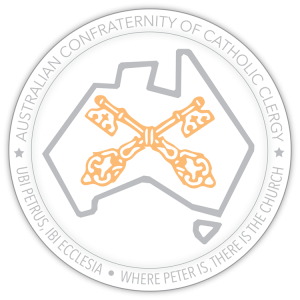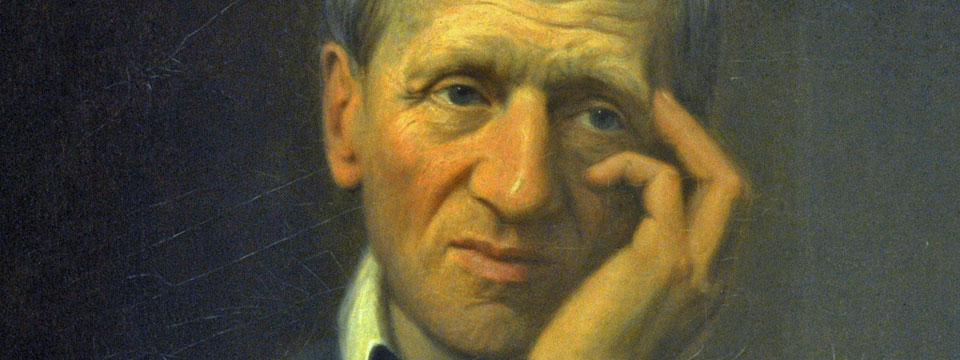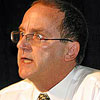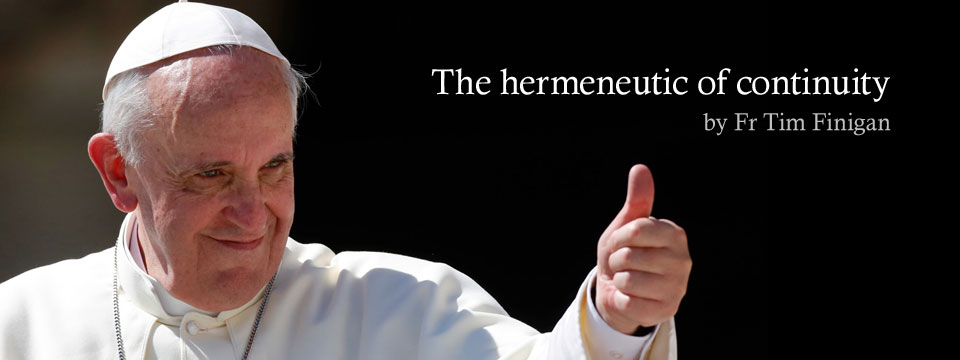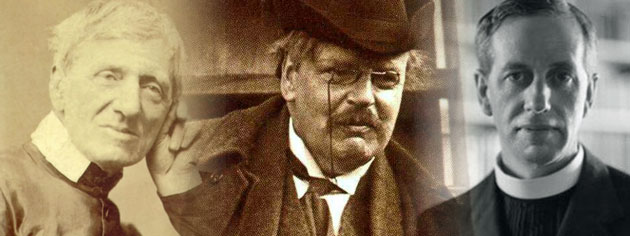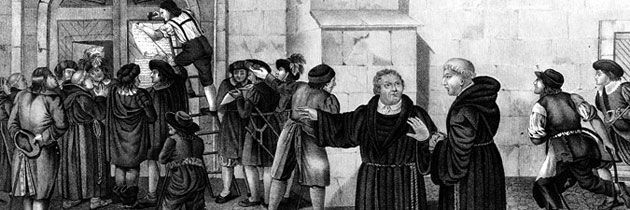The Anglican Death-Bed
On September 25 1843, the Rev John Henry Newman, Vicar of one of the most famous churches in England, St Mary’s Oxford, preached his last sermon as an Anglican at Littlemore, where he lived in an interesting experiment in Anglican Catholicism.{{1}} [[1]]See Trevor, 1962:303.[[1]] He said:
And, O my brethren, O kind and affectionate hearts, O loving friends, should you know any one whose lot it has been, by writing or by word of mouth, in some degree to help you thus to act; if he has ever told you what you knew about yourselves, or what you did not know; has read to you your wants or feelings, and comforted you by the very reading; has made you feel that there was a higher life than this daily one, and a brighter world than that you see; or encouraged you, or sobered you, or opened a way to the inquiring, or soothed the perplexed; if what he has said or done has ever made you take interest in him, and feel well inclined towards him; remember such a one in time to come, though you hear him not, and pray for him, that in all things he may know God’s will, and at all times he may be ready to fulfil it.
This reads like a eulogy, and indeed, Newman refers to this time as his ‘death-bed’.{{2}} [[2]]Newman, 1846: 141.[[2]] But the last line of this final Anglican sermon is telling: ‘that in all things he may know God’s will, and at all times he may be ready to fulfil it.’ The sermon was entitled ‘The Parting of Friends’, and although he was still two years away from reception into the Catholic Church, he is clearly referring to himself.
Many thousands of books and articles have been written on Newman more than 10,000 by the time of the centennial year (1990) of his death (1890) alone,{{3}} [[3]]See Gilley, 1990[[3]] and many more will appear following his beatification, now approved by the Holy Father. The grounds for his conversion will be covered many times over, with probably ever increasing complications and subtleties, but I would suggest we need not over-complicate Newman’s conversion, despite it taking him more than ten years to make the final step, nor indeed to over-complicate his Catholicism. His conversion was, as this last sermon puts it, Newman simply doing God’s will, and his Catholicism, simply his fulfilment of God’s will. And the simple point is that he could no longer do God’s will as a Catholic in the Anglican Church when the Court of Arches, through the judgement on June 30 1845 of Judge Jenner Fust in the Oakley case, declared that ‘the Church Catholic did not exist within the Church of England.’{{4}} [[4]]Turner, 2002:540-1.[[4]] Newman literally had no where else to go. To be Catholic, as he was then, within Anglicanism, was now in fact illegal according to the law of his Church. For most, this would not have mattered, but Newman, unlike most Anglicans in orders at the time, took his priesthood very seriously – as far as he was concerned a judgement from the Court of Arches was legally binding on him as a clergyman in the Church of England. But more than this, this judgement confirmed for Newman that the Anglican Church which he had loved so much was, in fact, in schism.
Certitude
Pope Pius XI in his 1930 encyclical on St Augustine (Ad Salutem Humani) refers to the now very famous catalyst for Newman’s conversion, Wiseman’s article in the Dublin Review on ‘The Anglican Claim’ where he quoted Augustine’s words against the Donatists, securus judicat orbis terrarum (“the whole world passes judgement without fear). Pius XI said that, ‘The reading of this phrase, not so very long ago, influenced to such a degree a man of high fame and noble nature, that he did not tarry long in entering the one Fold of Christ.’{{5}} [[5]]Pius XI, 1930.[[5]] In fact it was to take Newman 6 years after reading this phrase to finally join the Church.
That it took him so long, no matter how shattering his experience of reading Wiseman’s article, even while so many around him were received before him, is not actually complicated. Newman simply wanted certitude that what he was doing was not the result of his own private judgement, but was God’s will. The Court of Arches decision, together with the condemnation of his own Tract 90, finally showed him that will. He wrote many years later in the Apologia, ‘I had one final advance of mind to accomplish, and one final step to take. That further advance of mind was to be able honestly to say that I was certain of the conclusions at which I had already arrived. That further step, imperative when such certitude was attained, was my submission to the Catholic Church.’{{6}} [[6]]Newman, 1846:195.[[6]]
Even the most cursory analysis of his corpus of writings, both as Anglican and as Catholic, will show that time and time again he engaged with the lure and snares of ‘private judgement’ taking over from God’s will – he was surrounded by a world, political and scientific, that was increasingly positioning private judgement over God’s truths. Certitude for Newman – a highly skilled mathematician – skills that got him the prestigious Fellowship at Oriel College Oxford – would not come from his own private judgement; nor indeed from his own immense scholarship and wide reading – despite the fact that many commentators and biographers put his conversion down to his logical reasoning about Church history and development – certitude, for Newman, was nothing to do with the natural world of man at all – certitude was God-given – supernatural – and obtaining that certitude doesn’t come easily; to many of us it may never come at all – and if it does, it most certainly doesn’t come as a result of anything that we, as individuals, actually do.
Pope John Paul II summed this up very well in his message to a symposium celebrating the centenary of Newman’s death (27 April 1990) when he said, ‘Not least among his merits, he reminds us of the need for an interior disposition of loving obedience to God if contemporary society is to be successful in its quest for the full liberating truth which it urgently needs, and indeed knows itself to need.’ Pius XII writing in 1945 on the centenary of Newman’s conversion, summed it all up in a short quotation from Juvenal’s Satire IV ‘The Emperor’s Fish’, a satire on the unwillingness to tell the truth to those in power, (which would have pleased Newman immensely I think – he was writing pretty fluent Latin at 11 years old) the Juvenal quotation is vitam impendere vero (‘to lay out his life for the truth’).{{7}} [[7]]Juvenal. Sat iv.91 cited in Pius XII 1945.[[[7]]
Truth
The issue for Newman, which Pius XII recognised, was that there was only one truth worth laying out one’s life for, and that was to be found in Catholicism. And what did it matter that it had taken him ten years to be sure of that one simple fact? Newman was certain that God had a particular mission for him – he wrote not long after he was ordained a Catholic Priest in 1847 that, ‘God has created me to do him some definite service. He has committed some work to me that he has not committed to another. I have my mission.’{{8}} [[8]]Meditations and Devotions cited in John Paul 11 (2001).[[8]] But he also made it clear that we might not know what that mission actually is, and so total trust in God is necessary.
As Pius XII said of Newman, ‘A time came when the beauty of the Catholic teaching revealed itself clearly to his longing eyes; with that, no obstacle of any kind – his old prejudices, loss of prospects, the protests of his friends – could hold him back; nothing must stand between him and full adherence to the truth he had now mastered. He held to it ever afterwards with unshaken consistency, made it the guiding principle of his whole life, found in it, as in nothing else, full contentment of mind.’{{9}} [[9]]Pius XII, 1945.[[9]] Newman said, ‘Therefore I will trust Him…If I am in sickness, my sickness may serve Him, in perplexity, my perplexity may serve Him…He does nothing in vain…He may take away my friends. He may throw me among strangers. He may make me feel desolate, make my spirits sink, hide the future from me. Still, He knows what He is about.’{{10}} [[10]]Meditations and Devotions, cited in John Paul 11 (2001).[[10]] And God certainly did all of those things and more, but all serving over the years, and especially the early years as Newman learnt what it was to be a Catholic, to strengthen Newman’s certitude that he had made the right decision in his conversion.
Conversion
Almost every commentator and biographer talks about the inevitability of that conversion and Newman’s reception into the Catholic Church. For years before it happened, every newspaper, journal and magazine in England (and many other places) endlessly speculated on Newman, reporting his every word and action. He complained twenty years later in the Apologia of an ‘unmannerly and unfeeling curiosity,’{{11}} [[11]]Newman, 1846: 164[[11]] asking, ‘am I alone to be followed about by jealous prying eyes, which take note whether I go in at a back door or at the front?’{{12}} [[12]]Newman, 1846: 161.[[12]]
Crucially, I think, we need to recognise from the very beginning, that Newman’s conversion had nothing to do with particular influence from anyone else, though he recognises that his occasional correspondence with Dr Russell, President of Maynooth, from 1841 onwards, led him to read Catholic works, like St Alfonso Liguori’s sermons and the Spiritual Exercises of St Ignatius, that he might not otherwise have read.{{13}} [[13]]Newman, 1846: 179.[[13]] He was not, however, like so many Catholic converts, now and then, introduced to the Church by a friend; he had little or no interest in the rituals of Catholicism, in fact knew nothing of them in any real detail until after his reception;{{14}} [[14]]See Ker, 1988:320.[[14]] he was born into the age of Romanticism, but he had no romantic inclinations towards the Church aesthetically or otherwise, as many did at that time; he was not at all interested in what we might call the ‘vestments and vestures’ drama of Roman Catholicism; nor indeed, in Gothic revivalism, which brought so many into the Church at that time. In fact, he had little or no time for the Gothic, neo- or otherwise, and gloriously complained in later years that Pugin insisted on designing altars that were hopelessly inadequate for Pontifical masses.
Newman’s conversion resulted from something that was deconstructed by modernist subjectivism, then, and post-modernist relativism, now – and that was engagement with, and acceptance of undeniable and non-negotiable, absolute, objective, revealed truths. John Paul II in his Centenary letter put it this way:
Newman’s quest for the truth led him to search for a voice that would speak to him with the authority of the living Christ. His example holds a lasting appeal for all sincere scholars and disciples of truth. He urges them to keep asking the deeper, more basic questions about the meaning of life and of all human history; not to be content with a partial response to the great mystery that is man himself; to have the intellectual honesty and moral courage to accept the light of truth, no matter what personal sacrifice it may involve. Above all, Newman is a magnificent guide for all those who perceive that the key, the focal point and the goal of all human history is to be found in Christ (cf, Gaudium et Spes, 10) and in union with him in that community of faith, hope and charity, which is his holy Church, through which he communicates truth and grace to all (cf, Lumen Gentium, 8).’
The One True Church
It may seem strange to say this, but Newman had absolutely no interest in the accidents – of that Holy Church – he just wanted to make sure that whatever the substance of that Church was, it was the one true church. And he wanted certitude of that one true church, not to support his theories and theologising about development, or assent, or conscience, or whatever other grand themes he engaged with in his thinking and writing over his long life, nor to prove that his extensive patristic scholarship was correct, when so and so’s was not; or that the 39 Articles were seriously flawed, or that the Anglican Book of Services was a mish-mash of theological, doctrinal and liturgical contradictions, and so on.
His interest lay in being sure that the one true Church would be the Church where he could have the certitude of knowing that within that Church, he could save his soul.
Simple as that! Surely not? After all, we are talking about one of the leading intellects of his day; a serious and significant scholar; a major theologian and Oxford Don – the leader of a major movement; the writer of dozens of books and tracts; feted by Popes and famous to the point that rarely a day would go by without something in the newspapers about him. Surely, his conversion has to be more complicated that this?
Not at all – after many years of prayer and reflection, he came to the realisation that the only place that he could save his soul, was in the Catholic Church – no other Church, not least his own Anglican Church, could do that. The Oakley judgement confirmed it.
Saving His Soul
Salvation is the key to understanding Newman’s conversion – saving his soul was the one and only motivation for his reception into the Catholic Church, because he had come to the certain belief that the Anglican Church was in schism and so therefore unable to be the vehicle of Christ’s salvific grace.’{{15}} [[15]]Newman, 1846:206.[[15]] ‘The simple question is’, ‘Can I (it is personal, not whether another, but can I) be saved in the English Church? Am I in safety, were I to die tonight?’{{16}} [[16]]Newman, 1846:208.[[16]] His very question was, of course, thought outrageous within the Anglican Church, and indeed, one of the tests that started to be asked of candidates for Anglican orders at this time was ‘whether they thought Newman “an ill-used man”’ or not.{{17}} [[17]]Trevor, 1962:341.[[17]] If they did they weren’t ordained.
Newman knew almost nothing about the rites and rituals of Catholicism at this time; he had never been to Mass, but had witnessed it at a distance (with great scepticism) on his earlier travels in Europe; he had written vehemently and vociferously against much of its beliefs and doctrines, which he retracted in later years, not least transubstantiation, the communion of saints, devotion to the Blessed Virgin Mary, praying for the dead and much more. His conversion was not to the accidents of the Church, but to the substance of its existence. For example, he had never believed in transubstantiation, despite an experience he once had, he thought, of the real presence as an Anglican, until, he became a Catholic,{{18}} [[18]]Newman, 1846:215[[18]] and he believed it then because it was the doctrine of the one true Church and part of original revelation.
Once converted, he accepted all it had to offer, he talks of it as ‘coming into port after a rough sea’{{19}} [[19]]Newman, 1846: 214.[[19]] and he did so without question, though often with some difficulties, not least his hesitation about Southern European devotional practices, so loved by Faber, Wiseman, Manning, W.G.Ward and others.{{20}} [[20]]See Ward, 1934: 8f.[[20]] But as is often famously quoted from the Apologia, ‘Ten thousand difficulties do not make one doubt.’{{21}} [[21]]Newman, 1846: 214.[[21]] For example, once he determined on the Oratory as the vehicle for his Priestly life, he never doubted his decision but did have some difficulties with some applications of the Rule in England. He was probably right in thinking, for example, that the English would not take easily to the practice, then required in Oratories of the frequent use of the discipline, in public before one’s assembled parishioners.
His clear, and obvious, delight of the sheer joy of being in the same house where the Blessed Sacrament was reserved, basically, for me says it all – he was totally and completely at home, spiritually at any rate in the only Church that held the doctrine of the real presence. His joy at seeing the flickering red sanctuary lamp when he went into a Church, or knowing of Christ’s presence in the room, next to him, wasn’t Newman falling in love with some romantic spirituality – this was proof to Newman of religion ‘as an objective fact.’{{22}} [[22]]See Ker, 1988:320.[[22]] Without this deep belief in the reality of Catholicism his later battles and they were many, with church figures and leaders, though not the authority or Magisterium they represented, would have been untenable. He wrote not long after his reception that ‘I never knew what worship was, as an objective fact, till I entered the Catholic Church…’{{23}} [[23]]Ker, 1988:324.[[23]] Catholicism was for Newman ‘an awful reality’.
What Newman did, then, in becoming a Catholic in a world where the privileging of man was taking over in all spheres of activity and thinking; where unbelief was growing exponentially; where science and engineering were the new gods, what Newman did, made him stand out from the world of English privilege and status he was such a major part of, and he stood out I would suggest NOT because he became a Catholic as such – though that made good media coverage – but because he stood out for the salvation of his soul over and above everything else around him, and his becoming a Catholic, which was a secondary motivation to the prime motivation of saving his soul, was a total indictment of, and embarrassment to, not only State Anglicanism – the Erastian Church in England – but also the State itself. He had tried, unsuccessfully for so many years through the Tractarian movement to reform Anglicanism and restore its Catholicity, arguing as early as 1829 in his sermon ‘The Unity of the Church’ that ‘The Church of Christ … is not an institution of man, not a mere political establishment, not a creature of the state, depending on the state’s breath, made and unmade at its will, but it is a Divine society, a great work of God.{{24}} [[24]]Newman, 1829: 242.[[24]] Sixteen years later he revealed, by the act of his conversion as salvific, the unthinkable at this time of British Victorian supremacy of the world, that neither of the prime English institutions, Church and State, both growing in influence and importance around the whole world, that neither of these bastions of Victorian security and prosperity, was capable of saving a man’s soul.
Breaking the Victorian Rules
In doing what he did, at the time he did it, Newman broke all the rules of a Victorian England, gloriously self-confident in its abilities to control, as it basically did and was to do even more as so as the years went by, the entire world – he ran up to the Emperor, unabashed and totally sure about what he had come to learn and see for himself, and whispered to the King the truth about his new clothes. This is not the hyper-sensitive, timid, ‘souffre-douleur’, as Newman is so often thought to have been.{{25}} [[25]]Dessain, 1961:xx.[[25]]This is Juvenal’s Satire IV writ large in action in Victorian England – of someone not afraid to speak out.
At a time when Empire was the be all and end all of Britain; when manufacturing, industry, transport and almost every other aspect of life was changing rapidly; when buildings – whole towns and cities – were being built with such scale and solidity to scream out to everyone who saw them, ‘this building and all it stands for politically, socially, culturally and economically will last 1000 years’, Newman stuck a pin into the balloon and blew apart the myth, in a way no one had really done before him, that the State and its Erastian church, were simply a chimera, and could never offer real and lasting salvation to their people, despite all the appearances they might be able to do so.
And he did this, not by writing a book about it, though reflections emerged later; not by preaching sermons; not by capturing it in words of theology or philosophy, but by his action, taken thoughtfully and carefully over many years of often daily media scrutiny, of actually becoming a Catholic. He did this, in the end, quickly and without fanfare. He didn’t seek instruction; he didn’t call on his high status contacts like the then Bishop Wiseman to receive him with pomp and ceremony in glorious Gothic splendour, or map out a career path for himself as Archdeacon, later Cardinal, Manning seemed to do after his conversion. He was received by (the now Blessed) Fr. Dominic Barberi, following a cold wet and windy night at Littlemore in a converted cattle shed for a Chapel where if six knelt together in this windowless chapel they would be pushing each other out of the door{{26}} [[26]]Trevor, 1962:292.[[26]] and where at Newman’s first hearing of Mass, celebrated by Fr Dominic, Henry Wilberforce’s writing table had to be pressed into service as part of the Altar. After this, regular Mass, for Newman, was twice a week only at the chapel of St Ignatius in St Clement’s, which had been built in 1795, soon after the Catholic Relief Act of 1791 had allowed Catholic public worship again in England. For Newman going to Mass in St Clement’s involved a 2-3 mile walk from Littlemore, and this when the fast was then 12 hours, and the same walk back, usually without breaking that fast.
The Littlemore Experience
Littlemore had been a very interesting experiment in reformed Catholicism within the Anglican Church for Newman and his companions who lived with him there{{27}} [[27]]Turner, 2002:598.[[27]] It was effectively a period of time Newman would never be able to repeat, but something he had wanted to do as a means of injecting greater regularity into his life for many years. The day, dedicated to study and prayer, began at 4.30 am with meditation, then 5am Roman office in Latin with Matins, Lauds and Prime. At 11 am they recited the Anglican office of Morning Prayer, meditation again at 1.30pm, Evensong at 3pm. Roman Vespers was at 7pm, and the last meditation of the day at 8.30pm. and Roman Compline at 9pm. Work was basically domestic cleaning and their writing, and with all of this Newman still had to look after his Parish, going between Littlemore and St Mary’s in Oxford several times a week.{{28}} [[28]]See Trevor, 1962:274 & 292.[[28]] They had two meals only, and these generally quite spartan; silence was observed for a good part of the day,{{29}} [[29]]Ward, 1913:84f[[29]] fasting in Advent and Lent was very rigorous, frequent retreats used St Ignatius’ Spiritual Exercises. Later on they obtained a bolt of horsehair to make shirts and disciplines which they weren’t afraid to use in private.{{30}} [[30]]Trevor, 1962:332[[30]] Fr Dominic Barberi who had provided these to them (himself not unused to a rigorous life as a Passionist) was to plead with them, once they became Catholics, to tone things down a bit.{{31}} [[31]]Trevor, 1962:360[[31]]
Admission Into the One True Fold
Newman had spent a few years in quasi-monastic reflection and prayer at Littlemore, but all of that was to change when on October 1845 he resigned from Oriel College – a move of such magnitude at that time that we can barely comprehend its import over 160 years later. The simplicity of his letter should not fool us into diminishing the magnitude of the action. On October 3 1845 Newman wrote to Edward Hawkins, Provost of Oriel, ‘I shall be obliged to you if you will remove my name from the books of the College of the University.’{{32}} [[32]]Conn, 2007.[[32]] That was it. On October 7 he wrote to his close friend Henry Wilberforce that Fr Dominic Barberi the Italian Passionist (beatified in 1963) was coming to visit Dalgairns at Littlemore and that ‘I shall ask of him admission into the one true Fold of the Redeemer.’{{33}} [[33]]Newman, Letters, XI: 3.[[33]]
Fr Dominic arrived on the evening of October 8 not knowing what was to happen and after writing 15 letters announcing to his closest friends that he was about to be admitted into ‘what I believe to be the one True Fold of Christ’{{34}} [[34]]Letters, XI :5.[[34]] Newman began his general confession. The following day he continued the confession and was received into the Church, writing in one letter, ‘May I have only one tenth part as much faith as I have intellectual convictions where the truth lies!’{{35}} [[35]]Letters, XI:12.[[35]] and on the same day to his sister, who never forgave him becoming a Catholic, ‘If I thought any other body but that which I recognise to be the Catholic to be recognised by the Saviour of the world, I would not have left that body,’{{36}} [[36]]Letters, XI: 14[[36]] he told her, and she simply said, ‘What can be worse than this? It is like hearing that some dear friend must die.’{{37}} [[37]]Trevor, 1962:349.[[37]]
The following day he received communion at his first Mass (celebrated by Fr Dominic at Littlemore), and his second from the Mass the day after (Oct 11) before Fr Dominic left. On Sunday October 12 he walked the 3 miles into Oxford for Mass. Fr Robert Newsham had been priest there for 30 years, but for all that time he and Newman had never met.
Fr Newsham ran a school at Dorchester about ten miles away and so Mass was offered in Oxford only twice a week, something Newman was keenly aware of. He wrote to his sister again on October 14 saying, ‘It is said that the one support to persons in my case has been the daily Mass – now Mass is only twice a week at St Clement’s and at the distance of 2 or 3 miles.’{{38}} [[38]]Letters, XI: 16.[[38]] Becoming a Catholic in England was not just to make oneself a social pariah (within the Establishment) but it was also actually very difficult, in many places, to get to Mass or to a Priest with any reasonable frequency. We tend to forget the difficulties Catholics had at this time just being able to fulfil basic duties. Ambrose Phillips, (who later restyled himself Phillips de Lisle) a wealthy Roman Catholic squire with whom Newman stayed at Grace Dieu in Leicestershire, had become a Catholic at the age of 15, and when he was at Cambridge, had to ride 25 miles to hear Mass on Sundays. Newman, like so many Catholics emerging from the dark penal days, was learning to be a Catholic without the full on machinery, so to speak, of Catholicism around him.
Learning to be a Catholic
In his first few weeks as a Catholic he was able to attend Mass 8 times, the last on October 30 in Littlemore with Fr Dominic’s return. Now things start to move very quickly – the almost eremitical Newman of the Littlemore years, has become part of a Church he knows very little about in practical terms. Bishop Wiseman takes the reins, as it were, and calls Newman to Oscott where he was confirmed, taking the name of Mary, on November 1, barely three weeks after his reception. And neither before his reception or confirmation did Newman ever receive formal (or indeed informal) instruction.
Talks with Wiseman about his, and his companions’ future start in earnest in these first few weeks, and Wiseman offers Old Oscott for the Littlemore community to move into. Both Newman and Wiseman were anxious to keep this group together, but both were aware that such a group of highly educated, privileged, Oxford clergymen, now Catholic, with many more to follow, while presenting a wonderful opportunity for the Catholic church in England to grow, (and it did dramatically following Newman’s conversion) also presented a massive threat to established, post-recusant Catholics, and this was to prove the case for many years. We often overlook, in hindsight, the very painful fact that while Newman and others lost so many friends, family, their livelihoods, access and status, and were vilified by so many in the Anglican Church, many of the Catholics of the day were even more suspicious of them, (and of each other) and indeed the Catholic newspaper founded in 1840 (and still going) The Tablet, wrote some of the most stinging attacks against Newman for example writing: ‘An indocile Puseyite may be many degrees further from the Church than a teachable Atheist.’{{39}} [[39]]Turner, 2002: 615.[[39]]
